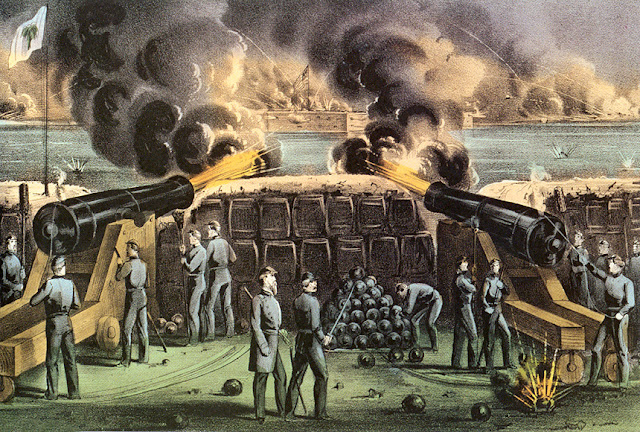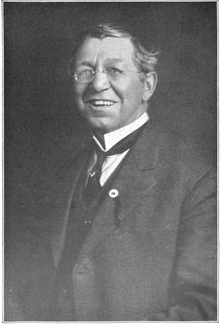April 12, 1861: Confederate forces fire on Fort Sumter, beginning the Civil War
With the election of Abraham Lincoln to the Presidency, southerners
worried that the Union was about to be radicalized. In South Carolina,
representatives met to discuss possibly seceding from the Union. On December
26, 1860, South Carolina voted to secede from the Union. Following their
example, Mississippi, Florida, Alabama, Georgia, Texas, and Louisiana also held
conventions and seceded from the Union in January and February of the following
year. That Spring the seceded states formed the Confederate States of America.
Young men from all over the Confederacy armed themselves and formed militia
companies. The Confederate government tasked these newly organized militias
with capturing federal forts and armories throughout the South. In the Spring
of 1861, troops lead by General P.G.T. Beauregard seized numerous federal
arsenals in South Carolina. In April, his campaign brought him to the mouth of
Charleston Harbor. Beauregard’s men prepared to siege the Union-held fort in
the harbor, Fort Sumter.
On April 11, 1861, Beauregard asked the Union commander of
the fort, Major Robert Anderson for the garrison’s surrender. Anderson refused.
Ironically, Beauregard had been student of Anderson’s at West Point. Beauregard
consulted with the Confederate government on what his next move should be. On
April 12, at 4:30 A.M. the Confederates opened fire on Fort Sumter. Edmund
Ruffin, a three-decade supporter of secession, had the honor of firing the
first shot. The bombardment lasted entire day and night of the 12th. The
fort finally capitulated on April 13. The siege resulted in no Union or Confederate
casualties, with the exception of a federal horse. After the surrender, the Union
garrison inside was allowed to leave unmolested. As Anderson withdrew his men, he
took the Union flag that flew during the battle as a memento. It would become
the rallying cry of the Union.
Throughout the war, the Union would try to retake Fort
Sumter, to no avail. However, in 1865 as William Tecumseh Sherman marched
toward South Carolina, the Confederate garrison abandoned the fort. On April 14,
4 years and a day since his surrender, Major Robert Anderson triumphantly
entered the fort, raising the flag to the precipice on which it had once flown.




Comments
Post a Comment